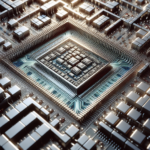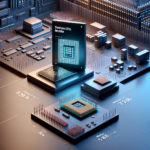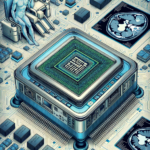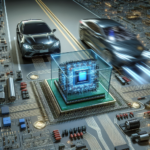The Role of CPUs in 3D Modeling and Animation
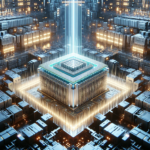
The Role of CPUs in 3D Modeling and Animation
3D modeling and animation have become integral parts of various industries, from entertainment and gaming to architecture and engineering. The creation of intricate 3D models and lifelike animations requires powerful hardware, and at the heart of this hardware is the Central Processing Unit (CPU). This article delves into the role of CPUs in 3D modeling and animation, exploring their importance, functionality, and how they compare to other components like GPUs.
Understanding 3D Modeling and Animation
What is 3D Modeling?
3D modeling is the process of creating a three-dimensional representation of any object or surface. These models are used in various applications, including video games, movies, architecture, and product design. The process involves using specialized software to manipulate points in virtual space (vertices) to form a mesh, which is a collection of vertices that define the shape of the object.
What is 3D Animation?
3D animation involves bringing 3D models to life by creating the illusion of movement. This is achieved by manipulating the models over time, using keyframes and motion paths. The process requires significant computational power to render the frames that make up the animation, ensuring smooth transitions and realistic movements.
The Role of CPUs in 3D Modeling
Processing Power
The CPU is the brain of the computer, responsible for executing instructions from software applications. In 3D modeling, the CPU handles tasks such as:
- Geometry Calculations: The CPU performs complex mathematical calculations to manipulate vertices, edges, and faces of 3D models.
- Simulation: Physics simulations, such as cloth dynamics, fluid simulations, and particle systems, rely heavily on the CPU.
- Scene Management: The CPU manages the organization and manipulation of objects within a scene, including transformations, hierarchies, and object properties.
Single-Core vs. Multi-Core Performance
Modern CPUs come with multiple cores, allowing them to handle multiple tasks simultaneously. In 3D modeling, both single-core and multi-core performance are important:
- Single-Core Performance: Many 3D modeling tasks, such as manipulating individual objects or vertices, rely on single-core performance. A CPU with a high clock speed can perform these tasks more efficiently.
- Multi-Core Performance: Tasks like rendering, simulations, and batch processing benefit from multi-core performance. A CPU with more cores can distribute these tasks across multiple threads, speeding up the process.
The Role of CPUs in 3D Animation
Rendering
Rendering is the process of generating the final image or animation from a 3D scene. This involves calculating lighting, shading, textures, and other effects. There are two main types of rendering:
- Real-Time Rendering: Used in video games and interactive applications, real-time rendering requires the CPU to process frames quickly to maintain smooth performance.
- Offline Rendering: Used in movies and high-quality animations, offline rendering can take hours or even days to complete. The CPU plays a crucial role in performing the complex calculations required for photorealistic images.
Simulation and Dynamics
3D animation often involves simulating real-world physics, such as gravity, collisions, and fluid dynamics. These simulations are computationally intensive and rely heavily on the CPU. The more powerful the CPU, the faster and more accurate the simulations will be.
CPU vs. GPU: A Comparative Analysis
Understanding GPUs
Graphics Processing Units (GPUs) are specialized hardware designed to handle parallel processing tasks, making them ideal for rendering and other graphics-intensive applications. While CPUs excel at general-purpose computing, GPUs are optimized for tasks that can be parallelized.
When to Use a CPU
CPUs are better suited for tasks that require:
- Complex Calculations: Tasks that involve intricate mathematical computations, such as physics simulations and geometry manipulations.
- Single-Threaded Performance: Operations that cannot be easily parallelized and rely on high clock speeds.
- General-Purpose Computing: Running the operating system, managing memory, and handling input/output operations.
When to Use a GPU
GPUs excel in tasks that involve:
- Parallel Processing: Rendering, image processing, and other tasks that can be divided into smaller, parallel operations.
- Real-Time Rendering: Video games and interactive applications that require fast frame rates.
- Machine Learning: Training neural networks and other machine learning tasks that benefit from parallel processing.
Optimizing CPU Performance for 3D Modeling and Animation
Choosing the Right CPU
When selecting a CPU for 3D modeling and animation, consider the following factors:
- Core Count: More cores can handle multi-threaded tasks more efficiently.
- Clock Speed: Higher clock speeds improve single-threaded performance.
- Cache Size: Larger caches can store more data for quick access, improving performance.
- Thermal Design Power (TDP): Lower TDP CPUs generate less heat, which can be beneficial for long rendering sessions.
Optimizing Software Settings
Many 3D modeling and animation software applications offer settings to optimize CPU performance:
- Thread Management: Configure the software to utilize multiple threads for rendering and simulations.
- Level of Detail (LOD): Adjust the LOD settings to balance performance and visual quality.
- Background Processes: Minimize background processes to free up CPU resources for 3D tasks.
FAQ
What is the most important CPU feature for 3D modeling?
Both core count and clock speed are important for 3D modeling. Core count helps with multi-threaded tasks like rendering, while clock speed improves single-threaded performance for tasks like manipulating individual objects.
Can I use a gaming CPU for 3D modeling and animation?
Yes, many gaming CPUs are well-suited for 3D modeling and animation due to their high clock speeds and multiple cores. However, professional-grade CPUs may offer better performance for intensive tasks.
How does the CPU affect rendering times?
The CPU plays a crucial role in rendering times, especially for offline rendering. A more powerful CPU with higher core counts and clock speeds can significantly reduce rendering times.
Is it better to invest in a CPU or GPU for 3D work?
Both components are important, but the choice depends on your specific needs. For tasks like rendering and simulations, a powerful CPU is essential. For real-time rendering and parallel processing tasks, a high-end GPU is beneficial.
Do I need a multi-core CPU for 3D modeling?
While single-core performance is important for certain tasks, a multi-core CPU is beneficial for rendering, simulations, and other multi-threaded operations. A balance of both is ideal for 3D modeling and animation.
Conclusion
The CPU plays a vital role in 3D modeling and animation, handling complex calculations, simulations, and rendering tasks. While GPUs are essential for parallel processing and real-time rendering, the CPU remains the backbone of any 3D workflow. By understanding the strengths and limitations of CPUs and optimizing their performance, artists and designers can achieve faster, more efficient results in their 3D projects.

